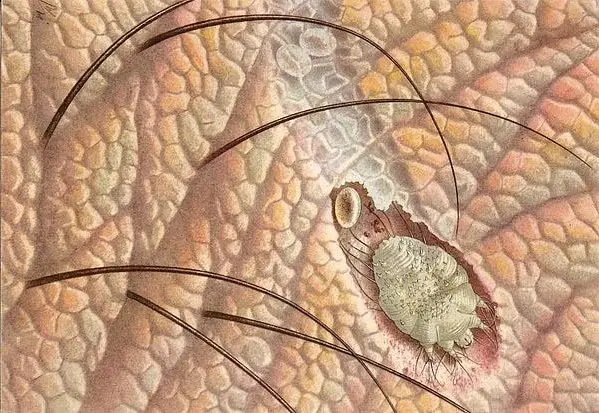Mange in dogs is a common skin disease of your lovely and healthy dogs. Mange is a small parasite that lives and grows in the hair follicle of the dogs. The organism can live outside the horse for more than three weeks and transmit to other animals, even humans. You will notice irregular scratching and allergic reaction at your dog’s skin. You may see the irregular hair loss, sore in the skin, restlessness, off feed, lethargy, lack of interest in playing, and severe cases of infection by opportunistic organisms. You must be very cautious and maintain a healthy environment for your dogs.
What is Mange in Dogs?
Mange in dogs is a common skin disease in dogs and puppies, and mites cause it. Although rare in the well-fed and well-kept dogs, some common mange-mite infection in dogs is Sarcoptic mange and Demodectic mange. The disease causes intense itching and, as a result, scratching, pets suffering open sores, hair loss, and scabs.

Types of Mange in Dogs
There are two significant forms of Mange in Dogs. These caused by different types of mites:
- Sarcoptic mange ( known as canine scabies)
- Demodectic disease ( known as canine demodicosis or red mange or Demodex)
Mange in Dogs: Sarcoptic Mange
Sarcoptic mange or Canine scabies is an infectious dermatosis of dogs, and rarely cats caused by the mite Sarcoptes scabies var Canis. The life cycle is completed on the host, and mites may survive for up to 21 days off the host. The mites initially affect the skin’s relatively hairless areas, such as the ear pinnae and elbow of dogs.
The Causes of the Sarcoptic Mange
The disease is caused by the highly contagious mite Sarcoptes scabies var Canis. Sarcoptic mange is one of the most pruritic skin diseases of dogs. The mite has also been reported to cause disease in cats, foxes, and humans. Most of the pruritus may be caused by a hypersensitivity reaction to the mite and its secretions.
Symptoms of Sarcoptic Mange in Dogs
Canine scabies is a centrally distributed disease with the ear margins and the elbows, hocks, and abdomen typically involved. The pinnal-pedal reflex may be positive in 25-90% of dogs with scabies. The signs and symptoms include intense scratching, skin rash, skin lesions, crust formation of the affected area, hair loss, severe itching, thickening of the skin, depression, lethargy, and secondary skin infections.

Diagnosis of Sarcoptic Mange
Diagnosis is based on the history of a contagious, nonseasonal, intense pruritus, physical examination findings with typical lesion distribution, the finding of mites or mite eggs or feces in superficial skin scrapings. Apart from puppies, fewer than 25-50% of dogs with signs of sarcoptic mange are positive for mites on superficial skin scraping. The diagnosis is often ultimately made by response to appropriate therapy.
Differential sarcoptic mange from other types of mange are flea bites hypersensitivity, demodectic mange or other skin conditions, atopic dermatitis, and food hypersensitivity Malassezia dermatitis, Melodia Strongyloides dermatitis is needed for exact management and treatment. In this condition, you will need additional diagnostic tests. Your veterinarian may recommend the rule out of these conditions.
Treating Your Dog for Sarcoptic Mange
In sarcoptic mange, your dogs are treated with anti-parasite medications. The most effective therapies of your dog are topical lime sulfur rinse weekly. Ivermectin and milbemycin oxime are highly effective for your dogs. Your veterinarian may also suggest maintaining a systemic treatment. Amitraz dips at the concentration of 250 ppm at a 2-week interval are also very useful for your lovely pets.
You should continue the therapy for 4-6 weeks. The dogs also needed treatment for secondary bacterial infections, which have arisen as a result of scabies infection. All in-contact animals must be treated as well as the environment. Variables success has been noted with either topical organophosphate rinse or fipronil spray.

Is Mange in Dogs Contagious?
Sarcoptic mange is a zoonotic disease that is transmitted from animals to people. It is a highly contagious disease that is transmitted to other dogs and humans. The mite’s life cycle is completed on the host, and the mites may survive for up to 21 days off the host.
Mange in Dogs: Demodectic Mange
Demodicosis, an intrafollicular parasitic disease caused by demodicid mites, is probably the most severe non-neoplastic dermatologic condition in pets. It is a common skin in dogs and puppies. All your dogs usually raised by their mothers possess this mite as mites are transferred from mother to pups via cuddling the first few days of life. Mites are ordinary residents of your dog skin; it is only in some individual dogs that mites cause problems.
Demodex canis spend their entire life cycle in the hair follicles and sebaceous glands of their host. Four life stages can be identified: fusiform eggs, six-legged larvae, eight-legged nymphs, and eight-legged adults. It usually affects the eyelids, periocular area, and head and neck of your pets.

The Causes of the Demodectic Mange in Dogs
Mites of the genus Demodex cause canine demodicosis. Demodectic mange is caused by Demodex canis, the parasitic mites reside in the hair follicles, although some have been found in apocrine, or sebaceous glands adjacent to follicles. Mites feed mostly on follicular debris and cells and occasionally on sebum. It seems that lymphocyte suppression, possibly influenced by a secondary bacterial infection, allows the mites to reproduce.
Symptoms of Demodectic Mange
- The localized form is more common, with hair loss symptoms with scaly skin on the eyelids, head, ears, and neck or forelegs.
- The entire body’s generalized form is affected with patchy fur, skin infections, bald, and scaly skin. It is often a result of an underlying disease that is suppressing the immune system.
Diagnosis of Demodectic Mange
Determining the extent of disease in demodicosis is one of the essential steps in diagnosis. Acquiring deep skin scraping from five body sites helps determine the extent of disease (lip fold, forefoot, hindfoot, and two additional lesions). Noting which life cycle stages are present and their numbers can give your veterinarian an idea about the disease’s activity.
Numerous eggs, few adults-active diseases, numerous dead adults, no egg-less active disease, potentially a better prognosis of the disease. The generalized disease involves positive skin scrapings from more than one body region. Localized disease is limited to a few lesions in one body region. Skin scraping sites can be reserved bi-weekly to assess response to therapy.

Differential demodectic mange from other types of mange is color dilute alopecia, alopecia areata, sebaceous adenitis, deep or superficial pyoderma, and injection site reaction, deep mycotic infection, cutaneous T-cell lymphoma, pemphigus foliaceous, drug eruption, zinc-responsive dermatosis, dermatophytosis, Malassezia dermatitis, and endocrine disorder.
Treating Your Dog for Canine Demodicosis
In this condition, you will require treatments to heal the skin and control the mites. In localized cases, your young dogs usually heal naturally; no treatment is required. You vet to recommend the general health check-up of your pets and treat any secondary infections or concurrent diseases that should be performed. A topical solution of rotenone or diluted amitraz solution can be applied, and MIticidal treatment for demodicosis is dips with 250 ppm amitraz every 14 days.
Dips containing lime sulfur or shampoos containing carbaryl can also be valid for your dogs. Unless the animal is mainly bald or has a short coat, complete clipping will be required for maximum contact with the dip. A benzoyl peroxide bath should precede the dip. This will help clear up skin infections and open the hair follicles so the dip can penetrate the mites. Shampoo must sit on your pets at least 10 minutes before rinsing. A sponge applies the dip.

Gloves should be worn while applying dip. The dip dries on the dog’s fur and should not be rinsed off. Your dogs should not get wet between dips. Goodwinol ointment, an insecticide you may use daily to control localized demodicosis. Antibacterial gels are used against localized demodicosis and associated skin infections.ivermectin is a broad-spectrum anti-parasite medication that can generally be used in your pets. Daily administration of oral ivermectin and oral milbemycin has also been useful for your lovely dogs.
Is Demodectic Mange contagious?
No, the demodectic mange is not contagious to other animals or humans. The mites are transmitted to puppies from their mother during the first few days of life. Demodex is a mite that can infect domestic animals and man. But the various species of Demodex mites tend to infect only one species of host animals. The disease is not dangerous, but the immune system must be depressed for the disease.

Prevention of the Mange In Dogs
Prevention for both forms of Mange In Dogs is critical and will require to heal the skin and the mite control or eradication. You should need expert guidance, and your veterinarian recommends the proper guidelines to prevent eczema In dogs. You must have to maintain proper hair clipping of your pets, applying topical compounds to kill the mites and strictly mite eradication and control. Dipping is very necessary to clean and heal the skin.
Final Advice on Mange in Dogs
Mange is a severe and notorious disease of your lovely dogs. You will suffer a lot if either type of psoriasis infects your dog. Your dog will not die, but it will be sick and odd-looking all the time. The preventive measures are essential to treatment. If you take adequate healthy measures and clean your kennel or dog’s house regularly, the probability of mange will reduce 90%.